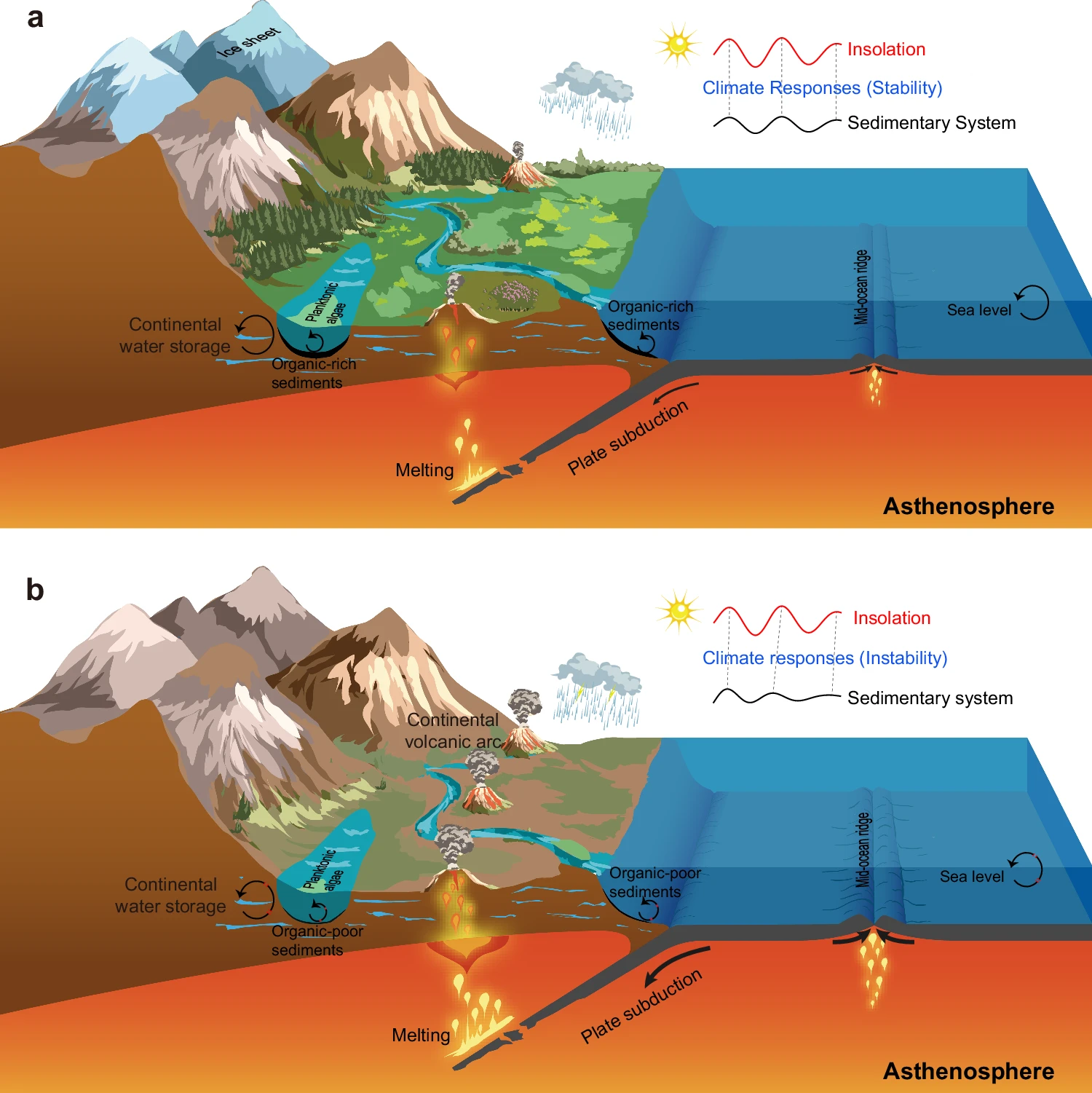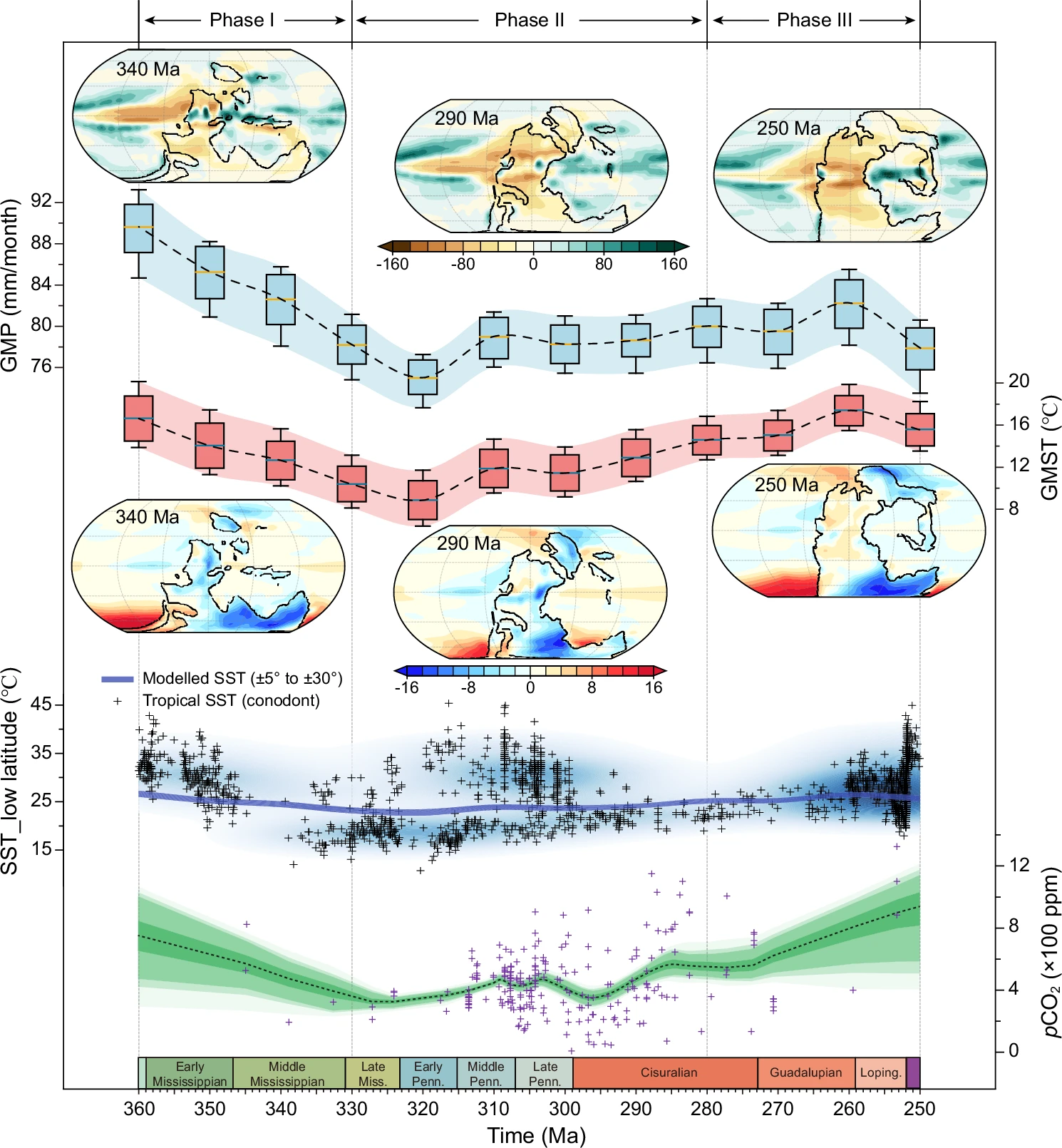Peking University, October 27, 2025: A research team led by Academician Jin Zhijun from the Institute of Energy, Peking University, has revealed how interactions between Earth’s tectonic activity and astronomical cycles jointly shaped the planet’s climate and carbon cycle during the Late Paleozoic Era (360-250 million years ago, or 360-250 Ma). The findings, published in Nature Communications under the title “Tectonic-astronomical interactions in shaping late Paleozoic climate and organic carbon burial,” offer new insights into the deep-time climate system.
Background
Between 360-250 Ma, Earth underwent dramatic transformations. Continents merged to form the supercontinent, glaciers spread across vast regions, and thick layers of coal and organic-rich rocks began to create the materials that would later become today’s fossil fuels. Scientists had long known that both tectonic activity (such as volcanic eruptions and mountain building) and astronomical cycles (changes in Earth’s orbit and tilt) influenced these events, but how the two worked together remained unclear.
Why It Matters
This study explains how processes inside the Earth and forces from space interact to control the planet’s climate. It shows that when tectonic activity was strong, the climate became unstable, while during quieter tectonic periods, the climate stabilized, creating ideal conditions for large-scale organic carbon burial. Understanding these natural interactions helps scientists better predict how Earth’s climate may respond to future changes in CO₂ and other factors.
Fig. 1. Late Paleozoic climate variability in temperature and precipitation (360–250 Ma).
Key Findings
The team divided the Late Paleozoic Era into three major tectonic phases using plate reconstructions, geochemical data, and carbon cycle modeling. They identified periods of enhanced activity (~360–330 Ma and ~280–250 Ma) marked by rapid ridge and subduction expansion, volcanism, and climate instability, and a middle phase (~330–280 Ma) of relative tectonic calm with reduced CO₂ release, cooler temperatures, and stable climates. Astronomical signals in sediments were most visible during the quiet phase when orbital cycles strongly influenced temperature and rainfall, but became obscured during active phases due to volcanic CO₂ spikes. Simulations confirmed that CO₂ levels acted as a major amplifier of climate swings, linking tectonic forces to global climate balance.

Fig. 2. Schematic representation of tectonic and climatic influences on organic carbon burial.
Future Implications
This work changes how scientists understand ancient climate history and shows how the Earth’s interior and outer-space cycles have always worked. This study provides a new perspective on the long-term carbon cycle regulation mechanism and also provides an important historical reference for modern climate research.
*This article is featured in PKU News "Why It Matters" series. More from this series.
Read more: https://doi.org/10.1038/s41467-025-63896-z
Written by: Akaash Babar
Edited by: Chen Shizhuo
Source: Institute of Energy, Peking University (
Chinese)

